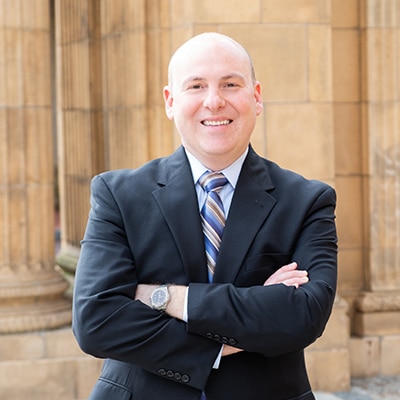Article written by:
Darci Congrove, CPA
Managing Director
Background
Investment in a Qualified Opportunity Zone is a new program intended to connect private investment capital to low-income communities nationwide. This concept was originally presented in a bipartisan bill, the “Investing in Opportunity Act” as an innovative approach to spur long-term private sector investments in low-income urban and rural communities. While the stand-alone act did not progress through Congress, the provisions it contained were incorporated into the Tax Cuts and Jobs Act enacted on December 22, 2017.
According to The Economic Innovation Group, more than half of America’s most economically distressed communities contained both fewer jobs and businesses in 2015 than they did in 2000, and new business formation is near a record low. The average distressed community saw a 6% decline in local businesses during the prime years of the national economic recovery.
U.S. investors currently hold $2.3 trillion in unrealized capital gains, representing a huge untapped resource for economic development. OZ’s will incentivize investors to use some of this capital in exchange for significant tax benefits.
Overview
Taxpayers investing capital gains from the sale or exchange of property in a Qualified Opportunity Fund may take advantage of three significant opportunities:
- Deferral of capital gains tax from the sale or exchange of property until they sell their investments in the Qualified Opportunity Fund, or December 31, 2026, whichever is earlier,
- An increase in basis if the investment is held for more than five years, and
- Elimination of capital gains tax on appreciation of the investment held within the Qualified Opportunity Fund if it is held for 10 years or more.
Alone or in combination, these three provisions significantly enhance a taxpayer’s return on investment.
Definitions
Qualified Opportunity Fund – An investment vehicle organized as a corporation or partnership for the purpose of investing in OZ property. Opportunity Funds are private sector entities required to invest 90 percent or more of their resources in OZ’s.
Qualified Opportunity Zone: A low-income census tract (LIC) designated by the governor of the state or territory in which it is located, and approved by U.S. Treasury.
- Up to 25% of LICs (as designated by the New Markets Tax Credit program) may be designated as OZ’s (states or territories in which there are fewer than 100 LICs may designated up to 25 LICs as OZ’s).
- Census tracts contiguous with LICs may be designated as OZ’s if the median family income of the census tract does not exceed 125% of the median family income of the LIC to which the tract is contiguous. No more than 5% of a state or territory’s LIC-contiguous census tracts may be designated as OZ’s.
Qualified Opportunity Zone Property – property which is:
- Qualified opportunity zone stock – Stock in a domestic corporation that is an OZ business during “substantially all” of the applicable holding period, and the stock is acquired after December 31, 2017, at its original issue in exchange for cash,
- Qualified opportunity zone partnership – A capital or profits interest in a domestic partnership that is an OZ business during “substantially all” of the applicable holding period, and the interest is acquired after December 31, 2017, in exchange for cash, or
- Qualified opportunity zone business property – Tangible property used in the trade or business of an OZ business if the original use of the property commences with the qualified opportunity fund or the fund “substantially improves” the property, and the property is acquired by purchase after December 31, 2017)
- Qualified opportunity zone business – a trade or business in which:
- Substantially all of its tangible property, owned or leased, is qualified OZ business property;
- At least 50 percent of its total gross income is derived from the active conduct of its business;
- A substantial portion of its intangible property is used in the active conduct of its business;
- Less than five percent of the average of its aggregate unadjusted bases of the property is attributable to nonqualified financial property; and
- No portion of its proceeds is used to fund certain types of businesses: a private or commercial golf course, country club, massage parlor, hot tub facility, suntan facility, racetrack or other facility used for gambling, or any store the principal business of which is the sale of alcoholic beverages for consumption off premises.
Mechanics
While the deferral provisions operate similar to an IRC section 1031 like-kind exchange, the OZ concept is actually better, as it requires reinvestment of a recognized gain. A 1031 exchange requires reinvestment of all net proceeds from a sale. The deferral period ends the earlier of when taxpayer sells its investment in the Qualified Opportunity Fund, or December 31, 2026, at which time the taxpayer must include the amount of the gain in its gross income.
The amount of the gain is determined by subtracting the lesser of the amount of excluded gain or the fair market value from the amount of the taxpayer’s basis in the investment. The taxpayer’s basis in the investment is determined based on how long the taxpayer holds the investment. The taxpayer’s basis in the investment is initially deemed to be zero, but increases as the holding period of the investment reaches certain milestone periods:
- For investments held for five years, the taxpayer’s basis is increased by 10 percent of the amount of deferred gain.
- For investments held for seven years, the taxpayer’s basis is increased an additional five percent of the amount of deferred gain.
- For any taxpayer that holds its investment beyond the maximum deferral date of December 31, 2026 and for a minimum of 10 years, the taxpayer’s basis in its investment shall be equal to the fair market value of the investment on the date it is sold or exchanged, resulting in no additional recognized gain.
Examples
An individual investor sells 1000 shares of Google stock (purchased in 2005 for $291,000). The sale results in a capital gain of $813,000. The individual would generally owe federal capital gains tax of $193,494 (23.8%) on this sale. If the investor instead rolls his $813,000 gain into a Qualified Opportunity Fund within 180 days of the sale, recognition of the $813,000 gain is deferred until the earlier of the date that the Opportunity Fund investment is sold or exchanged, or December 31, 2026.
If the investor holds the Opportunity Fund investment for at least five years, the basis in the original investment is increased by 10% of the deferred gain. $813,000 gain multiplied by 10% = $81,300 added to basis. A sale after five years will reduce the original deferred capital gain of $813,000 to $731,700.
If the investor holds the Opportunity Fund investment for another two years (total of seven years), the basis in the original investment is increased by an additional 5%. So, a sale after seven years will reduce the original deferred capital gain of $813,000 by a total of 15% to $691,050.
If the investor holds the Opportunity Fund for a total of 10 years, all appreciation on the investment in the Fund will be excluded from tax entirely. Assume that the value of the original $813,000 has now appreciated inside the Fund to $1,125,000 at the 10-year mark. The recognized gain of $312,000 will be exempt from any capital gains tax.
Note that the investor will have to pay the deferred capital gains tax as of December 31, 2026, even if the investment in the Fund continues. So, in this case, assuming the gain rollover took place before December 31, 2019, the investor would owe capital gains tax at a 23.8% rate on $691,050 at the end of 2026 and would have to use outside funds of $164,470 to cover this liability.
Next Steps
Governors of each state have until March 22, 2018 to submit their OZ designations to the U.S. Treasury Department for certification. Then, Treasury must act to publish regulations to guide the program, including rules for certifying Opportunity Funds and for ongoing compliance and reporting. Until that has happened, investors cannot take advantage of the OZ program.
It is important to note that the issuance of Treasury regulations often takes a long time. For example, when the New Markets Tax Credit program launched, it took more than two years for regulations to be issued. Given the specific gain recognition date of December 31, 2026 included in this legislation, we expect that community development entities will likely begin to solicit investors for OZ’s in advance of the issuance of regulations and final certifications, so that they can quickly move to invest once the rules are known.

